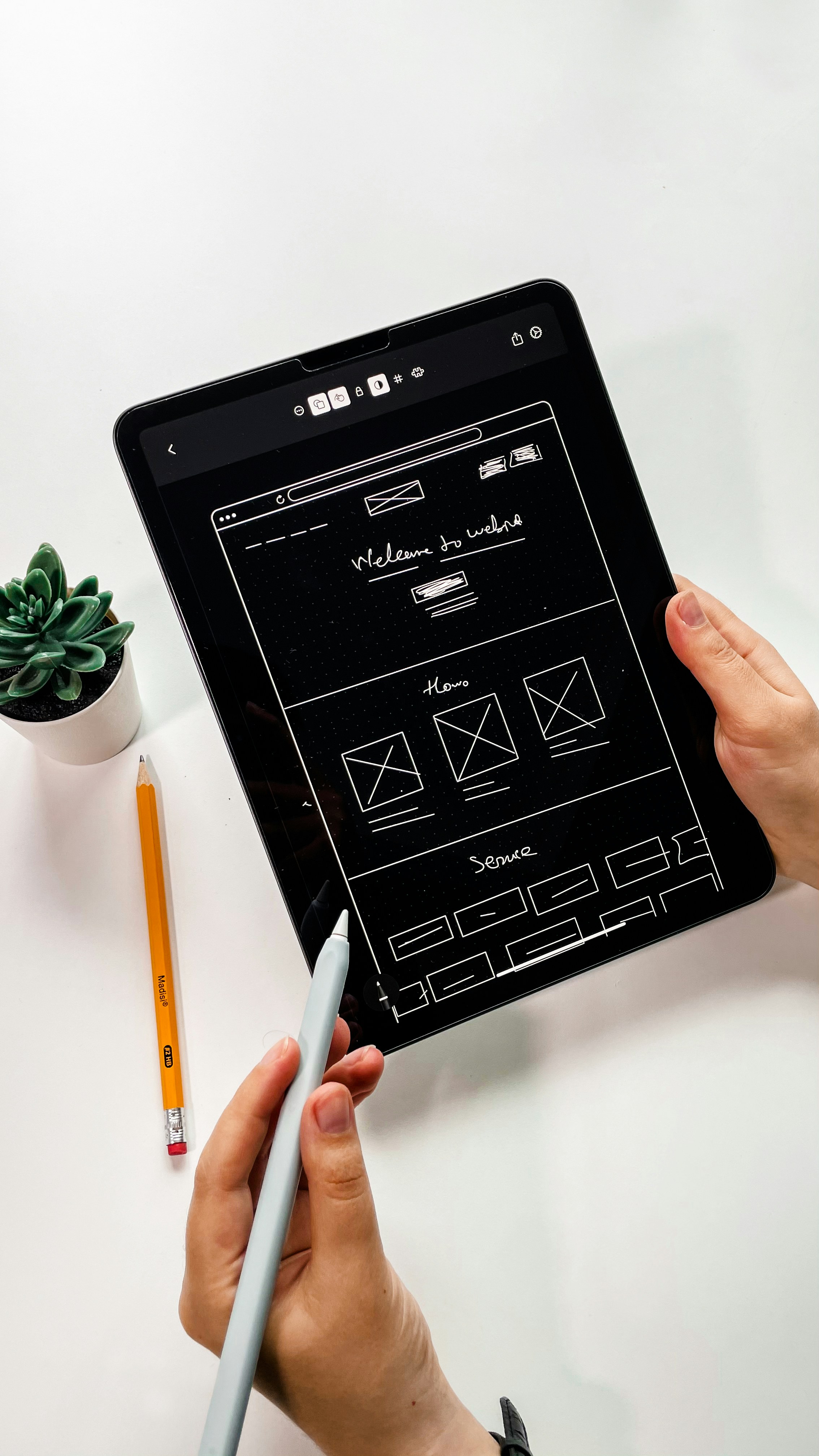Apr 1, 2024
Conversion rates are a critical metric for the success of any online business. A website's design plays a pivotal role in influencing user engagement and driving conversions. This article will explore various design strategies that can be implemented to increase conversion rates and optimize the overall performance of an online business.
User engagement represents the ongoing interaction between users and a product or service. It is measured through key metrics such as daily or monthly active users, session duration, and bounce rate. Improving user engagement involves regularly updating the product, adding new features, providing high-quality content, and listening to user feedback. [2][4]
User conversion refers to the desired action that a user takes, such as making a purchase, filling out a form, or subscribing to a service. Conversion rate is the ratio of users who complete the desired action compared to the total number of visitors or users. Improving conversion rates is often a primary focus for businesses, as it directly impacts revenue and the overall success of digital marketing efforts. [2][3][4][5]
Analyzing user behavior, including metrics like pages visited, time spent on pages, and common customer journeys, can provide valuable insights to enhance the user experience and drive higher conversion rates. Strategies such as optimizing website design, improving page load speed, using compelling calls-to-action, and conducting A/B testing can all contribute to increased user engagement and conversions. [3][4][5]
The impact of website design on user engagement and conversion rates is a critical factor for the success of any online business.
Visual Appeal and First Impressions
A visually appealing website can create a positive first impression and capture the user's attention. Factors like color scheme, typography, imagery, and layout all contribute to the overall aesthetic and can influence how users perceive and interact with the site. Research shows that users form an initial impression of a website within just 50 milliseconds, and this impression significantly impacts their decision to stay or leave.
User Experience (UX) Design Principles
Applying UX design principles, such as intuitive navigation, clear information architecture, and responsive design, can greatly enhance the user experience. An easy-to-use website that allows users to find information quickly and effortlessly is more likely to engage users and drive higher conversion rates.
Navigation and Accessibility
Intuitive navigation is crucial for user engagement. A well-structured website with clear and logical navigation helps users find what they're looking for, reducing frustration and increasing the likelihood of conversions. Accessibility features, such as keyboard navigation and screen reader support, also play a vital role in ensuring an inclusive user experience.
Page Load Speed and Performance
Website performance, particularly page load speed, has a significant impact on user engagement and conversions. Slow-loading pages can lead to high bounce rates and user frustration, while fast-loading, optimized websites can improve dwell time and encourage users to explore further.
Content Presentation and Readability
The way content is presented on a website, including the use of headings, subheadings, and formatting, can greatly influence user engagement. Content that is easy to read, scannable, and visually appealing is more likely to capture the user's attention and encourage them to engage with the site.
Design Strategies for Boosting Conversion Rates
Clear and Compelling Call-to-Action (CTA) Buttons
Prominent and visually appealing CTA buttons that clearly communicate the desired action can significantly improve conversion rates. Using contrasting colors, concise and action-oriented copy, and strategic placement of CTAs can encourage users to take the next step. [11][12][13][14][15]
Strategic Placement of CTAs and Conversion Funnels
Carefully mapping out the user journey and placing CTAs at key decision points can guide users through the conversion funnel. Analyzing user behavior and testing different CTA placements can help optimize the conversion process. [11][12][13][14]
Use of Visual Hierarchy to Highlight Key Elements
Employing visual hierarchy principles, such as size, color, and positioning, can draw the user's attention to the most important elements on the page, including CTAs, product information, and value propositions. This can improve the overall user experience and drive higher conversion rates. [11][12][13][14][15]
A/B Testing and Iterative Design Optimization
Continuously testing different design variations and analyzing the results can help identify the most effective strategies for boosting conversion rates. A/B testing allows businesses to make data-driven decisions and optimize the website design over time. [12][14][15]
Personalization and Customization for Targeted User Experience
Tailoring the user experience to individual preferences and behaviors, such as displaying personalized product recommendations or customizing the layout based on user demographics, can enhance engagement and increase the likelihood of conversions. [12][14][15]
By implementing these design strategies, businesses can create a more compelling and user-centric online presence, ultimately driving higher conversion rates and better business outcomes.
Key insights from the case studies on design strategies for boosting conversion rates:
Clear and Compelling Call-to-Action (CTA) Buttons
Prominent and visually appealing CTAs with contrasting colors, concise copy, and strategic placement can significantly improve conversion rates. [16][17][18][19][20]
Strategic Placement of CTAs and Conversion Funnels
Carefully mapping the user journey and placing CTAs at key decision points can guide users through the conversion funnel and optimize the conversion process. [16][17][18][19]
Use of Visual Hierarchy to Highlight Key Elements
Employing visual hierarchy principles like size, color, and positioning can draw users' attention to important elements like CTAs, product info, and value propositions, improving the user experience and driving higher conversions. [16][17][18][19][20]
A/B Testing and Iterative Design Optimization
Continuously testing design variations and analyzing results allows businesses to make data-driven decisions and optimize the website over time to boost conversion rates. [17][19][20]
Personalization and Customization for Targeted User Experience
Tailoring the user experience to individual preferences and behaviors can enhance engagement and increase the likelihood of conversions. [17][19][20]
Mobile optimization is also very important when it comes to conversion rates. We have an extensive article where you can learn about it here.
LINK: The Ultimate Guide to Responsive Web Design: Making Your Website Mobile-Friendly
Leveraging psychology in website design to boost conversion rates:
Understanding User Behavior and Decision-Making Processes
Applying psychological principles like the reciprocity principle, consistency bias, and social proof can influence user behavior and guide them towards desired actions. [21][22][23][24]
Persuasive Design Techniques
Using persuasive design elements like clear and compelling calls-to-action, visual hierarchy, and scarcity/urgency tactics can motivate users to convert. [21][24][25]
Social Proof and Testimonials
Incorporating social proof through customer testimonials, reviews, and showcasing brand partnerships can build trust and credibility, leading to higher conversion rates. [22][24][25]
Scarcity and Urgency Tactics
Leveraging scarcity and urgency, such as displaying limited availability or countdown timers, can create a sense of exclusivity and prompt users to take immediate action. [24][25]
Tools and resources for conversion rate optimization (CRO):
Analytics Platforms for Tracking User Behavior
Google Analytics is a free and widely used tool for collecting and analyzing website traffic data to identify opportunities for optimization. [26][27][28][29][30]
Other advanced analytics platforms like Adobe Analytics and Heap provide in-depth user behavior tracking and reporting capabilities. [27][28][29]
Heatmaps and Click Tracking Tools
Tools like Hotjar, Mouseflow, and Crazy Egg offer heatmaps, click tracking, and session recordings to visualize how users interact with a website. [29][30]
Conversion Rate Optimization (CRO) Software
Platforms like Optimizely and AB Tasty specialize in A/B testing, multivariate testing, and other CRO features to help businesses optimize their websites. [26][28][29]
Educational Resources and Training Materials
Websites like Qualaroo, KlientBoost, and Userpilot provide comprehensive guides, tutorials, and best practices for conversion rate optimization. [27][28][29]
Businesses can gain valuable insights into user behavior and implement data-driven strategies to improve their conversion rates and overall online performance by leveraging a combination of these analytics, testing, and educational tools.
In this session, we’ve talked about:
Implementing design strategies
Leveraging psychological Principles
Using analytics, testing and educational tools
Be sure to put these into practice so that your business can unlock new opportunities for growth and better conversion rates.
Sam Kwok
_____________________________________________________________________________
Read why your business should use long-tail keywords for SEO and Ads
Read What makes a user-friendly website?
Read How you can choose the right web designer
Citations:
[1] https://www.zendesk.com/blog/4-customer-engagement-metrics-measure/
[2] https://www.analyticodigital.com/blog/what-user-activation-conversion-complete-guide
[3] https://www.cobizmag.com/5-ways-user-behavior-analysis-drives-user-engagement-and-conversion-rates/
[4] https://www.storyly.io/post/top-user-engagement-metrics-to-track-and-measure
[5] https://blog.littledata.io/2019/08/15/does-customer-engagement-actually-impact-your-conversion-rate/
[6] https://abmatic.ai/blog/relationship-between-website-design-and-engagement
[7] https://www.linkedin.com/pulse/why-website-designers-add-user-engagement-essential-michael-janamian
[8] https://www.researchgate.net/publication/306183816_A_Literature_Review_Website_Design_and_User_Engagement
[9] https://owdt.com/article/the-impact-of-website-design-on-user-engagement-and-conversion-rates/
[10] https://abmatic.ai/blog/impact-of-website-layout-on-user-engagement
[11] https://pulsebay.co.nz/post/top-5-web-design-strategies-to-grow-your-conversions/
[12] https://vwo.com/blog/design-principles-increase-conversions/
[13] https://www.netdreams.co.uk/blog/10-effective-web-design-strategies-to-improve-conversion-rates/
[14] https://dogandrooster.com/blogs/principles-of-conversion-design
[15] https://bootcamp.uxdesign.cc/boost-conversion-rates-with-ux-and-design-best-practices-654d708653da?gi=5b4e0dc93824
[16] https://www.netdreams.co.uk/blog/10-effective-web-design-strategies-to-improve-conversion-rates/
[17] https://www.eleken.co/blog-posts/web-design-examples-of-usable-responsive-and-high-converting-websites
[18] https://neilpatel.com/blog/100-conversion-optimization-case-studies/
[19] https://www.linkedin.com/pulse/7-high-converting-b2b-website-design-examples-dennis-mcmahon
[20] https://cxl.com/blog/surprising-conversion-rate-optimization-case-studies/
[21] https://www.shopify.com/partners/blog/5-psychological-concepts-web-designers-should-use-to-maximize-conversions
[22] https://abmatic.ai/blog/role-of-psychology-in-conversion-rate-optimization
[23] https://uxplanet.org/the-psychology-of-conversion-ux-design-principles-part-1-38ed4ce05b1c?gi=550319ed1ce6
[24] https://www.bigapplemedia.com/improve-conversion-rates-using-psychology-web-design/
[25] https://www.seoresellersaustralia.com.au/web-design-2024-leveraging-psychology-for-better-user-interaction/
[26] https://blog.hubspot.com/marketing/conversion-rate-tools
[27] https://www.klientboost.com/cro/
[28] https://userpilot.com/blog/cro-tools/
[29] https://qualaroo.com/beginners-guide-to-cro/tools-to-test-and-optimize-conversion/
[30] https://www.hotjar.com/conversion-rate-optimization/tools/

Why Website Accessibility Guidelines Are Important in 2024
Jul 10, 2024

How Much Does a Website Cost?
May 23, 2024

Top 10 Web Design Failures of All Time and What We Can Learn from Them
Apr 30, 2024

Top 5 Mistakes to Avoid in Web Design
Apr 2, 2024

Boosting Conversion Rates: How Website Design Impacts User Engagement
Apr 1, 2024

The Ultimate Guide to Responsive Web Design: Making Your Website Mobile-Friendly
Mar 28, 2024

Top 15 Questions to Ask Web Designers Before Hiring Them
Mar 27, 2024

Building Small Business Websites
Mar 26, 2024

Looking for a premium local New York web designer for your premiere website?
Mar 25, 2024

How to choose a website designer
Apr 8, 2022

The Critical Role of SEO-Optimized Web Design
Mar 15, 2022

Why Strong Branding Makes You Stand Out From Your Competitors
Feb 28, 2022

What Is A User-Friendly Website And Why Should I Have One?
Feb 6, 2022

Why Local Businesses Should Use Long-Tail Keywords For SEO and Ads
Jan 12, 2022
